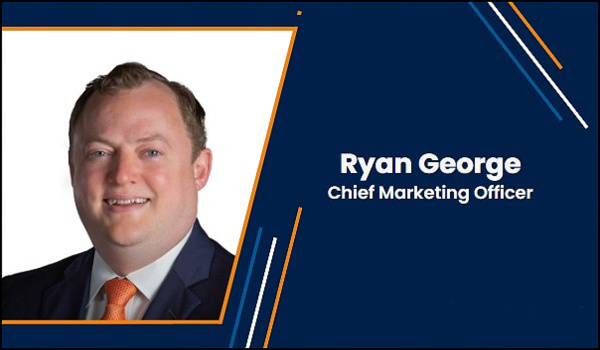Today, no standard integration protocol exists in the wealth industry regarding technology. But the wealthtech industry is heading in the right direction with Craig Iskowitz’s work around integration scoring. Iskowitz’s technology rating score also includes the technology’s ability to integrate with other technologies. With the growing amount of new wealthtech year over year, integration scoring can point organizations in the right direction before they buy.
What does integration mean?
Technology vendors can claim they integrate with other technologies, but there are various degrees of integration. Knowing that the term ‘integrated’ accurately describes what happens between two technologies is essential. The standard integration is an open API. However, a bidirectional integration should qualify as a standard integration.
“It’s important for the user and the technology developer to acknowledge that no system stands alone and no one has only one technology they use everything for; that’s just not realistic. There are better solutions, so integrating enables an organization to connect to multiple best-of-breed solutions. The API connection allows them to create a technology ecosystem that works for them from front to back,” says Ryan George, Chief Marketing Officer at Docupace.
Historically, technology companies have wanted to keep the user on their technology as long as possible. But now, while a specific technology operates in the background, it connects with other technologies through a bidirectional integration. The user can then seamlessly pass data between multiple technologies depending on their actions and desired outcomes. For example, pulling information from one technology and sending documents to another technology and into a CRM becomes seamless, a change of mindset versus keeping a user within one technology.
The Digital Ecosystem
A digital ecosystem is a group of technologies connected through bidirectional integrations that function as one. Digital ecosystems connect clients, client data, applications, and various technologies. Interoperability is the key to the ecosystem’s success.
Digital ecosystems help by ensuring users, such as advisors and clients, don’t have to step out of the system and use paper-based processes or multiple technologies. For example, through the digital ecosystem, advisors can open an account and service a client on the other side of the country. Doing so digitally creates a relatively good client experience. The advisor doesn’t have to have UPS or FedEx deliver the application for the client to sign, and the client doesn’t have to return the documents in that manner either.
“While there’s still work to be done by the wealth tech industry to improve the user experience, a digital ecosystem enhanced with integrations can help ensure the experience isn’t swivel chair. In this manner, the experience is streamlined between the two or more systems, ensuring it’s not a distorted experience where the user must back out of a system and login into another one,” adds George.
Users want to stop having to duplicate steps or move from one system to another; in essence, they want to be able to ‘walk along the line’ between systems. The most important thing is seeing the endpoint, which is the custodian. So the digital technology ecosystem starts data gathering from the CRM. Then the data passes to the financial planning and portfolio management software, then forwards the documents to the custodian. So, users go along that line and can share all that information forward and back into the CRM, where the entire process starts.
Partner integrations and the client experience
Integrations are essential to client serving and the client’s experience because they make it easy to update information across integrated technology tools. So if you need to change somebody’s address, you can across integrations, making sure that it’s changed everywhere versus having to change the address in every other system. That crucial part is the initial client experience and the ongoing client experience.
“Within PreciseFP, around 90 points of data can be gathered. All that information gets pulled into the CRM, then into an application such as a financial planning tool or a risk tolerance questionnaire. If other technology tools are needed for a specific action, you only have to use them once because the information automates into the next tool. Having a bidirectional integration pushes that data wherever it needs to go, and you never have to capture it again,” comments George.
Integrations for compliance checkers, KYC (know your client), and others help automate processes to make the client experience positive. Integrations allow those compliance requirements to happen when opening an account automatically. And best of all, it doesn’t slow down the process or muck up any part of the account opening and helps organizations fulfill their compliance obligation.
“We have a compliance checker tool in Docupace that digitally delivers the Form CRS from the adviser to the client. One of many reasons it’s potent is that the client has to attest that they’ve received it digitally. When they open the email, the integration captures a timestamp acknowledgment required by the SEC and FINRA.
If the technology has sent Form CRS three times and it isn’t acknowledged, then the tool will automatically send the form to a fulfillment house and be sent by mail. That way, an advisor doesn’t have to worry about fulfilling their Form CRS obligation when an examiner comes to their office because they have the audit trail,” says George.
Docupace has numerous integration partners that align with Docupace’s product roadmap and mutual customers. The company believes in strategically listening to its clients and what they may need to fill gaps in the client’s overall tech stack. They consider integrations that can help solve their current client’s problems. They also seek integration partners that can raise the tide together,’ by advancing wealth tech for the industry as a whole.
Integration partners working together
A good technology partner constantly looks for where they can add value individually or where integration can create value when both tools combine. It’s more than opening up API because the work is not necessarily done only by one integration partner. Both must scale out the integration work needed on both ends to integrate. That’s the state of the technology integration business as it becomes more open.
“We want to ensure that everybody has what they need when we open that API up. They have the instructions and the guides they need to complete the integration from their end. Instead of just opening it up and letting them try to find the way around, we want to make sure that it’s clear how they can best work with us,” adds George.
Because integrations are double-ended, meaning if technology changes on one side, it could break the integration, all partners have to be careful. The biggest challenge with integrations is that most require maintenance and care once you connect through APIs. An infinite number of integrations can cause challenges because if the client finds the integration is broken, it can impact their business.
Every wealth tech company has a product development roadmap for its platform or tool. Integration partners often share their roadmaps to determine the high priorities for each based on client needs. Also, if there are overlapping clients between integration partners, they can collectively add value for that customer through their product roadmaps.
George adds, “Whatever technology tools an organization chooses, they just want to ensure their advisors and clients have a positive experience. Every technology partner must understand that the organization has trust and reputational risks in their technology choices. Since integrations are critical to distributing data throughout the technology ecosystem, there must be a commitment between technology partners to deliver a positive experience regardless of which organization we’re both helping.”
To learn more about how Docupace can help your firm reach operational excellence, click here for a free demo.








